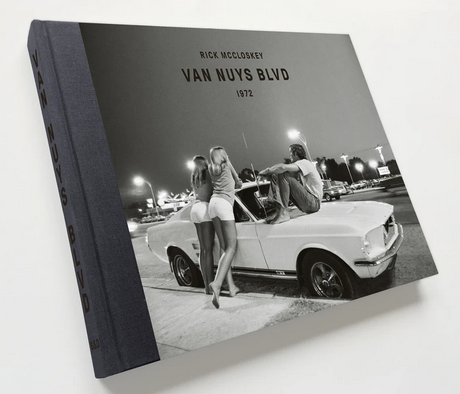
Limited Edition Re-Print
AMERICAN CAR CULTURE AT ITS VIBRANT BEST
Wednesday night was “Cruise Night” in the San Fernando Valley, a suburb of Los Angeles. The stretch on Van Nuys Boulevard between Ventura Boulevard on the southern end, and well past Sherman Way to the north, teemed with kids and cars from all over Southern California on Wednesday nights. It was a terrific place to both see and be seen, and to show off your ride as well.Gas was cheap, times were great, and the boulevard hummed with life during the evenings. Even the «draft» during the Vietnam War did not dampen the street scene. By 1972, the year Rick McCloskey went to Van Nuys to shoot his series of photographs, the culture on the boulevard had become an amalgamation of divergent lifestyles, automobiles – used and new – and some very different «looks» and styles. There were «tribes» of van kids – surfers mostly – low-riders, muscle cars, street racers, Volkswagen owners, and many more, and of course, thousands of young people. The idea of «retro» had arrived as well, with some young people emulating the look and style of the 1950s. Of course, there were individuals who had to be there for work. In making these images, Rick McCloskey set about portraying the young people, their cars, and the iconic background settings. Today, young people no longer have anything similar to the past boulevard gathering places, where so many people can enjoy «just being there» together. Akin to starlight still trickling in from a long vanished world, these photographic images are what we have left
Hardcover
132 pages,
118 duotone plates with a text by the photographer
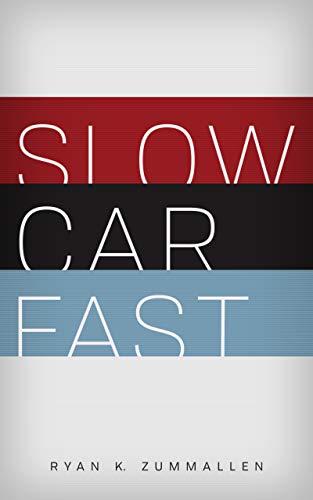
How did horsepower and speed get so out of control? Do young people still like cars? Who are the automotive icons that will shape car culture for years to come?
Slow Car Fast: The Millennial Mantra Changing Car Culture For Good offers answers to the questions on the mind of every kid who grew up with a poster on their wall and dreamed of owning their dream car one day, ferreted out through the first-hand reporting of veteran auto journalist Ryan ZumMallen.
ZumMallen goes inside the automotive zeitgeist to explain how modern car culture came to be, from the old-school (massive improvements in engineering and technology) to the new-school (the rise of video games and social media).
Featuring interviews with dozens of influential voices and ride-alongs in today’s automotive unicorns, Slow Car Fast is a must-have for anyone who knows that getting behind the wheel is only the beginning.

Ton Up! A Century of Café Racer Speed and Style focuses on the story of the ton-up boys and their café racers. But it’s much more than just that. Illustrated with historic and modern photos and featuring a text by one of the world’s motorcycle historians, it’s really the story of motorcycle speed and style evolved from the early 1900s right through today.
Cafe racers are most associated with the young, rebellious rock-and-rollers of 1960s Britain. These riders created the quintessential café racers—fast motorcycles customized to resemble the racing bikes of the period. They were called “café racers” because their riders raced on public roads, from one café to the next. The goal was to do “the ton” (exceed 100 miles per hour) on these runs, which led to their designation as “ton-up boys.”
Today, ton-up culture is more popular than ever and recognized worldwide with a following of young and long-time riders alike.With Ton Up!, enjoy a scenic ride through the history of this vibrant scene.

Born in a small garage, in a pure Steve Jobs style, Dallara is today one of the most important companies in the world for the design and construction of racing cars, a true masterpiece of Italian genius. The founder was the engineer Gian Paolo Dallara, a man inextricably linked to his land but able to face international challenges thanks to intuition, a mental form directed to innovation and an extraordinary technical skills. The volume tells a story out of the ordinary and a technologically advanced reality, which bases its success on the enthusiasm and passion of young engineers and on the curiosity of the founder. But it also speaks of the most significant moments and victories and how the future and tradition find a common field of action in the small town of Varano de’ Melegari.
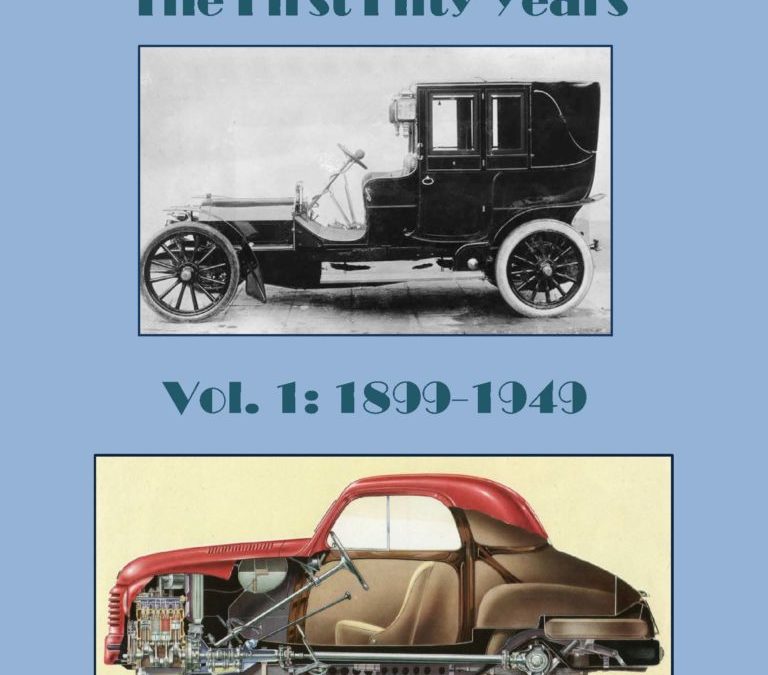
This new book traces the history of the FIAT (Fabbrica Italiana Automobili Torino) company from foundation in 1899, when a group of well-to-do young men decided to found one of the first Italian motorcar manufacturers in Turin, having watched imported French cars putter around and realising their country had no equivalent industry. One of the founders, Giovanni Agnelli, addressed a meeting of fellow-founders on 11th July 1899 thus: “We cannot waste any time. You should have seen what I saw the other day on my trip to Nice. Hannibal is at the gates. In France, even the public sector is starting to use the motorcar.”
Fiat today is a pre-eminent European motor manufacturer producing a wide range of cars to suit every need and budget, cars always cleverly engineered and elegantly styled.
This is volume 1 of 2, a historical survey of 100 years of Fiat cars. The first book covers a fifty year period from 1899-1949, which witnessed the creation of the Fiat businesses and the creation of many innovatively engineered popular cars and trucks as well as aircraft which saw action during two wars.
Competition successes were legion during the period. Fiat attracted brilliant engineers and talented managers, many of whom became legendary names in the annals of motoring history. Without their creative genius, knowledge and skills the company might not have gotten where it is today- bumpy thought the road has been many a time.
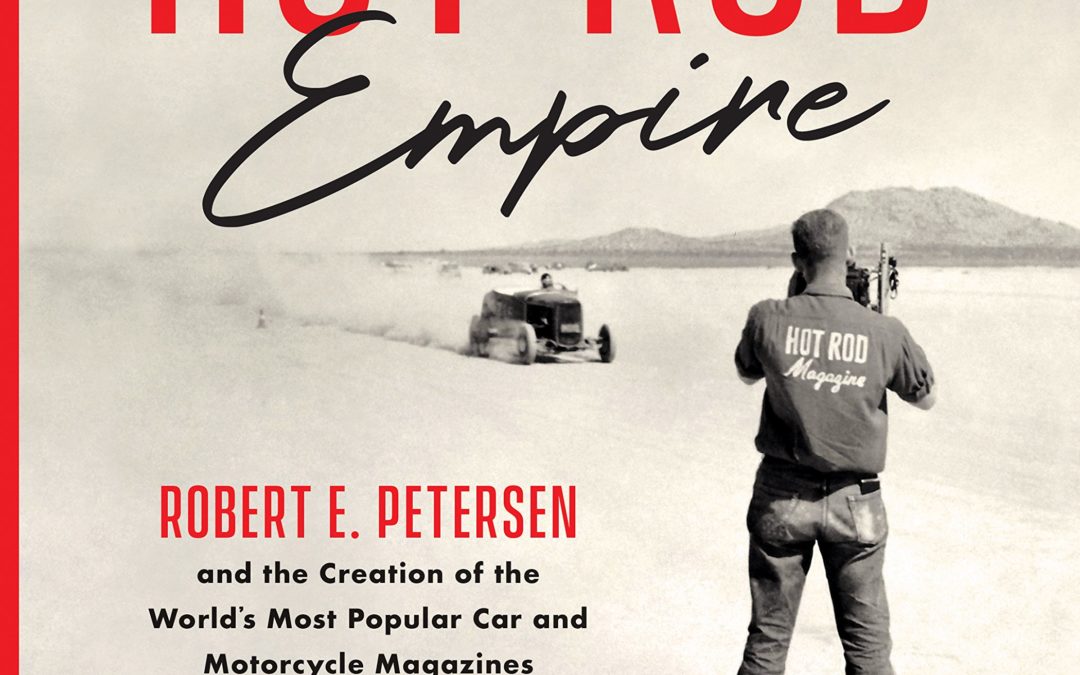
Hot Rod Empire details Robert E. Petersen’s creation of Hot Rod Magazine in the 1940s and the Petersen Publishing empire that grew to the mainstream juggernaut we know today.
The end of World War II marked the release of pent-up war-years energy and the desire to live. For many this meant indulging in long-denied purchases, like a new car. For another group, including young vets, it meant a return to car building and racing. Money, exciting new cars, and speed parts all flowed freely in post-war America.
Robert Petersen, a young SoCal-based photographer and Army Air Corps vet, noted the rapidly growing hot rod scene in and around Los Angeles. His first move was to organize the Los Angeles Hot Rod Exhibition in 1948. His second, and brilliant, move was to launch at the same event the first edition of Hot Rod magazine. From this launch pad, Petersen Publishing Company would grow to become the most influential enthusiast publisher in America.
Petersen’s magazines were rallying points for all aspects of the car, truck, and motorcycle hobbies, well as nurturing and promoting all aspects from car building to racing to show events. Hot Rod, Motor Trend, Car Craft, Motorcyclist, Off-Road and Four Wheel Drive and some 75 other enthusiast titles dominated magazine racks and provided substantial influence over transportation and numerous other hobbies.
Hot Rod Empire celebrates the birth and explosive growth of the transportation hobby under Petersen’s watch.

In the 1960s, model kit building was a huge hobby. Kids built plastic kits of planes, tanks, race cars, space ships, creatures from scary movies, you name it. Before baseball card collecting, Pokémon, and video games, model kit building was one of the most popular hobby activities. Car and airplane kits were the most popular, and among the car kits, muscle cars, as we know them today, were one of the most popular categories.
Many owners of real muscle cars today were not old enough to buy them when the cars were new, of course. Yet kids of the 1960s and 1970s worshiped these cars to an extent completely foreign to kids today. If you couldn’t afford or were too young to buy a muscle car back then, what could you do? For many, the next best thing was to buy, collect, and build muscle car kits from a variety of kit companies. Hundreds were made. Many of these kits have become collectible today, especially in original, unassembled form.
Although people still build kits today, there is a broad market for collectors of nostalgic model kits. People love the kits for the great box art, to rekindle fond memories of building them 40 years ago, or even as a companion to the full-scale cars they own today. Here, world-leading authority Tim Boyd takes you through the entire era of muscle car kits, covering the options,collectability, variety availability, and value of these wonderful kits today. Boyd also takes you through the differences between the original kits, the older reproduction kits, and the new reproduction kits that many people find at swap meets today. If you are looking to build a collection of muscle car kits, interested in getting the kits of your favorite manufacturer or even just of the cars you have owned, this book will be a valuable resource in your model kit search.

Fasten your seat belts! Indy 500 driver Lyn St. James provides inspirational advice for everyone as she recounts her inspiring career as a world-renowned Indy driver. Lyn St. James was 45 years old when she joined the world of Indy racing. Now known as the American Woman Racing Icon of the Century, Lyn is a testament to the power of determination and positive thinking. In this inspiring, motivational book, St. James chronicles her last Indy 500 and looks back on a career filled with challenges. She recounts years of adversity and the struggle to obtain corporate sponsorships, despite being named the Indy 500 Rookie of the Year. She recalls record-breaking runs at Talladega and Daytona, terrifying crashes, and the joys of mentoring young women drivers. On every page of this story people will find the motivation and encouragement to follow their dreams and reach their goals.
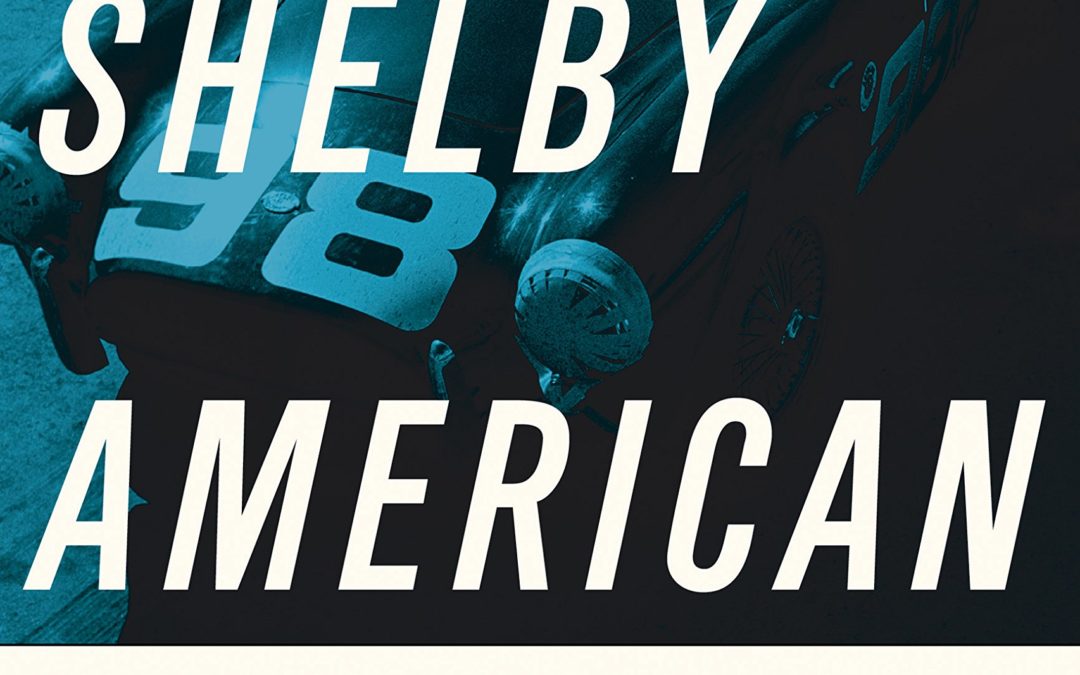
SIGNED
In the late 1950s, a young John Morton was transfixed with sports car racing. His dreams of competition eventually led him to enroll, in 1962, in the Shelby School of High Performance Driving. In a bold moment after the last class, Morton asked Carroll Shelby if he might come to work for the newly formed Shelby American. The answer was “Yes, here’s a broom.” Thus ended Morton’s college career and began his long racing career.
Over the next three years, Morton would be a firsthand witness to the evolution of one of the most iconic sports car builders and racing teams of the 1960s. Inside Shelby American is his personal account of a company overflowing with talent, from designer Pete Brock to fabricator extraordinare Phil Remington to drivers like Dan Gurney, Ken Miles, Bob Bondurant, and Phil Hill. The cars were equally captivating: AC Cobra, Mustang GT350, Ford GT, Daytona Coupe. In this book, Morton’s story is intertwined with the memories of other Shelby staffers of the period, revealing through historic photography and an untold perspective the rousing story of America’s most legendary racer and car builder.
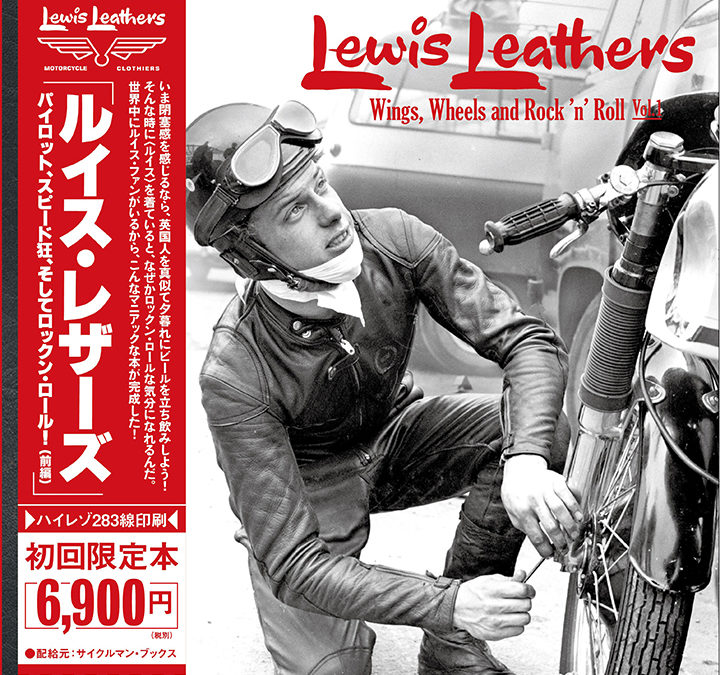
Lewis Leathers is Britain’s oldest motorcycle apparel company. Lewis Leathers has specialised in high quality, English-made classic motorcycle jackets since 1892. In the mid ’50’s the British young teenagers were inspired by the American biker look which they picked-up as part of the then new motorcycle culture. They started to wear Lewis Leathers jackets. During the ’70’s Lewis Leathers got attention from the Punk scene. The company has a rich history and is nowadays a true cult classic. Rin Tanaka, publisher of the legendary My Freedamn book series, made the ‘Lewis Leathers – Wings, Wheels and Rock & Roll Vol.1 (1890’s-1960’s)‘ book together with Derek Harris (the driving force behind Lewis Leathers). Rin Tanaka is an expert when it comes to vintage clothing and lifestyle. With the Lewis Leathers book Vol. 1 Rin Tanaka dived into the large Lewis Leathers archive to show some unique pieces and highlights from the history of the company. Just like his previous books you can put this one high on your wishlist. And it seems that there’s also a Vol. 2 coming.
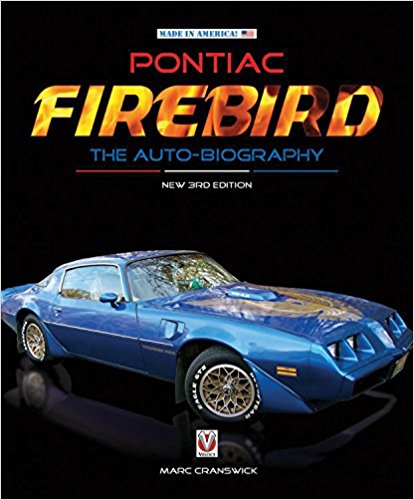
Over a 40 year period the Pontiac Firebird has earned a unique place amongst speedy domestic cars. What started out as another contender in the “me too” Mustang pony car race ended up becoming so much more. Only Pontiac could have come up with a coupe like the Firebird, and it was the Firebird that kept the performance fires burning once the mighty GTO was gone. The Firebird has garnered a reputation for being larger than life and many have come to view it as a large car, but that was not always the case. Pontiac’s Firebird was originally a small US car, classified as a sport compact. In the days when people used the terms personal car and specialty car the Firebird wasn’t even all that big. However, after the first major gas crunch viewpoints altered. One thing that didn’t change was Pontiac’s commitment to keeping their Bird flying high.
The Firebird altered significantly through its lifetime, reflecting general changes and trends in the auto world at large. The Firebird’s tale reflects the development of the mainstream domestic car in the modern era. V8s, turbo V8s, turbo V6s, HO V6s, overhead cam I6s and even a Super Duty four banger. If there’s a performance avenue to be explored then the Firebird has been there, and Pontiac never quite gave up on the hope of using a transaxle.
Popular with car fans and in the sales charts, the Firebird has had a high profile both in television and at the movies. The Pontiac Firebird has also received its fair share of attention from hot-rod shops, tuners and car customizers. As per Pontiac tradition the Firebird delivered what folks expected in the real world. Even during the lean years the Firebird kept the 400 cube 4 speed dream alive when others had moved on to paint and tape specials. Fast cars didn’t die out in 1973, they just started wearing the “Screamin Chicken” on their hoods.
As a collector car the Firebird has all the credentials. A strong fan base, wide variety of power train and trim options, various low volume and commemorative models, and a healthy helping of nostalgia thrown in for good measure. A number of Firebird models are already valuable classics, but certain younger versions can be counted on as some of the fastest appreciating collector cars of today and tomorrow.
The Firebird legend just gets bigger. From the go faster 1960s, gas mileage and pollution controlled 1970s, performance renaissance of the 1980s, through to the indifference of the 1990s. The Firebird was always there, this is its story. Cutting edge research and over 320 photos bring this in-depth, incredibly detailed story to life.
This edition feature an extra 40 images and new text.
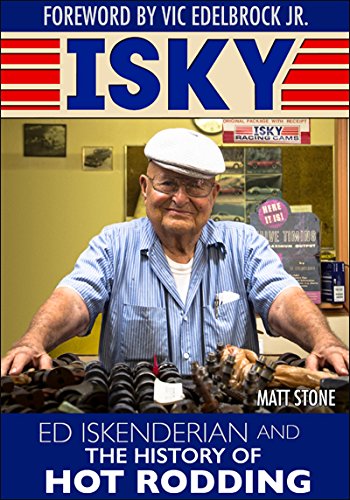
SIGNED By Isky and Matt Stone
To tell the life story of Ed “Isky” Iskenderian is to tell the history of hot rodding in America. Ed was there from the very beginning. Born in 1921 to first-generation Armenian immigrants, Ed’s first hobby was ham radio, but like many young men in the years before World War II, his interest turned to automobiles, especially hot rods. Ed had natural skills in metal working and machining that were developed in high school. He wanted to further develop those skills, so he joined the Air Corps to continue his education and flew with Air Transport Command. By the time Ed mustered out of the service, the California hot rod scene was in full bloom, with tens of thousands of vets who had the desire to make cars go fast.
Isky: Ed “Isky” Iskenderian and the History of Hot Rodding, tells the whole story, from his pre-war Lake Muroc and car club activities, his service in the military, starting a small business fabricating parts and making cams in the back of a rented shop, and then selling cams to other rodders. It covers how he grew a business from a single cam grinder and became the leading cam authority in barely 10 years. Ed was a gifted machinist, and he also had a natural knack for promotion. He purchased an ad in the very first edition of Hot Rod magazine, sensing something big; his instincts, as always, were right. He was also the first to use T-shirts and uniforms as promotion. Not only was he an early pioneer in the industry for print adverting and catalogs, he was also among the first to understand the value of having successful race cars using his cams in their engines and wearing his decals on their fenders. The biggest names in the racing industry were running Isky cams, and Ed made sure the world knew it.
Ed’s company name went on to become one of the household names in the performance community. His continued success is an entertaining tale of mingling with industry icons, insight into the business of hot rodding, great stories of yesterday and today, and a life very well lived. You will enjoy the stories recorded here as much as Ed “Isky” Iskenderian seems to enjoy telling them.
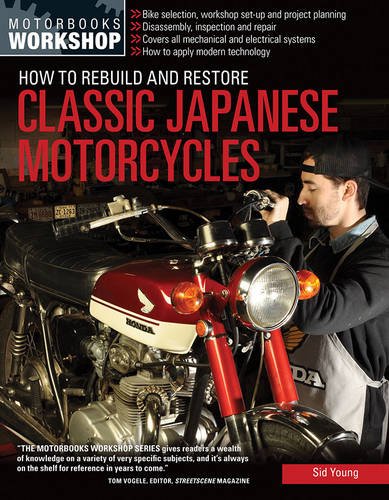
Everything you need to know to restore or customize your classic Japanese motorcycle.
Whether you want to correctly restore a classic Japanese motorcycle or create a modified, custom build, you need the right information about how to perform the mechanical and cosmetic tasks required to get an old, frequently neglected, and often long-unridden machine back in working order. How to Rebuild and Restore Classic Japanese Motorcycles is your thorough, hands-on manual, covering all the mechanical subsystems that make up a motorcycle. From finding a bike to planning your project to dealing with each mechanical system, How to Rebuild and Restore Classic Japanese Motorcycles includes everything you need to know to get your classic back on the road.
Japanese motorcycles have been the best-selling bikes in the world since the mid-1960s, driven by the “big four”: Honda, Yamaha, Suzuki, and Kawasaki. Of course certain bikes have always had a following – Honda CB750, 305 Hawk, CB400-4, Benly; Suzuki GT750, Katana, GS1000S; Yamaha XS650, RD400 Daytona, TZ; Kawaski H1, H2, Z1R – and these have now become the blue-chip Japanese bikes leading collectors to seek out more common (and now more affordable) alternatives.
This is the perfect book for anyone interested in classic Japanese motorcycles, as well as prepping a bike to build a cafe racer, street tracker, or other custom build.
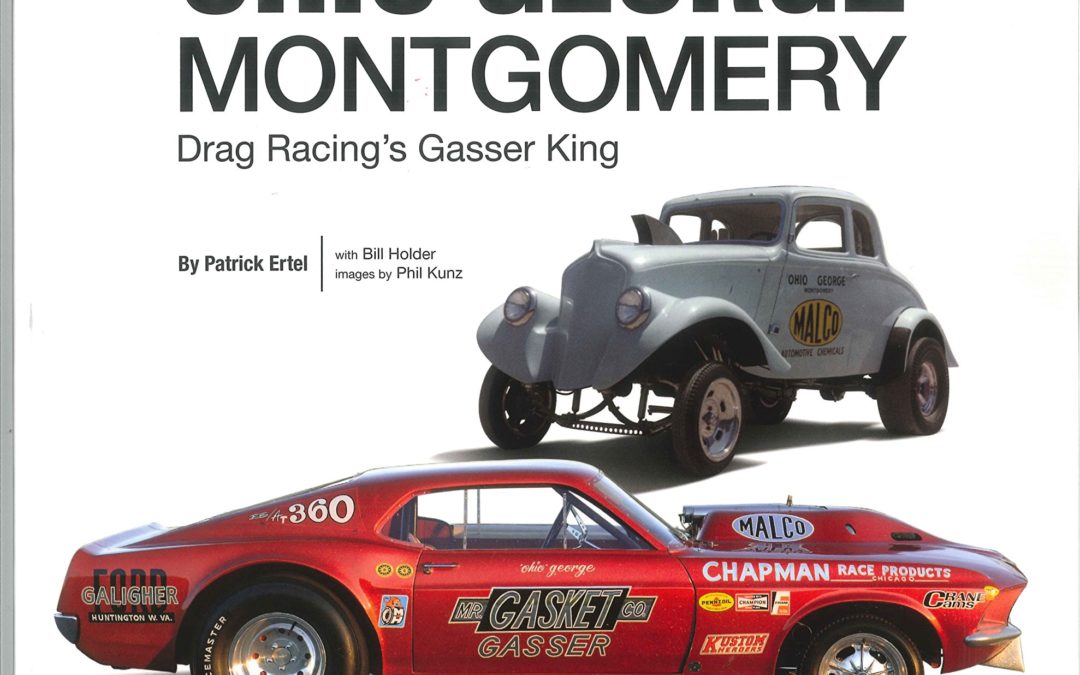
As a young man, George Montgomery lived for cars. He came of age in the classic era of the hot rod and fully immersed himself in the car culture. George Took car building seriously and went on to become one of the pioneers of the sport of drag racing. From a little shop in a suburb of Dayton, Ohio, he built and raced cars that led the world in innovation and craftsmanship. George was a leading participant in the famous “Gasser Wars” match races of the 1960’s where he earned the moniker “Ohio George,” while driving his iconic 1933 Willys to victory after victory. The era of the Gasser Wars was one of the most colorful chapters in racing history and George was one of the most successful racers of the time. Always in innovator, Montgomery built the groundbreaking Malco Gasser Mustang in 1967 and followed it with the revolutionary Mr Gasket turbocharged Mustang a few years later. After retiring from racing in 1985, George became one of the most successful engine builders in the country. He is the recipient of the National Hot Rod Association’s most prestigious awards, including the Lifetime Achievement Award, and is listed as one of drag racing’s top 50 all time drivers.
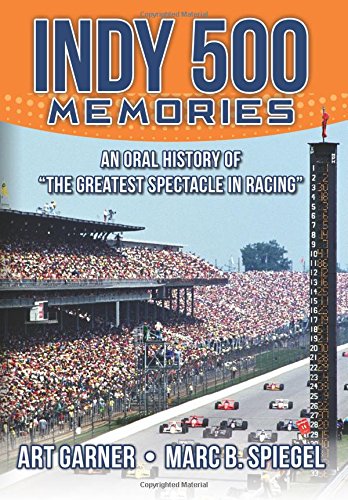
More than 150 drivers, fans, celebrities and others share their personal stories and remembrances of the world’s most famous auto race. Twenty different race winners representing more than 40 victories are among those sharing memories, including the greatest names in the sport: Foyt, Unser, Andretti, Rutherford, Cheever, Mears, Sullivan, Rahal, Montoya, Castroneves and Kanaan. Others include Gurney, Guthrie, Goodyear, Patrick, Power, Stewart, St. James and many more. The book is as much about dreams as it is memories, from A.J. Foyt listening to the 500 in his daddy’s garage as young boy, to Bev Patrick bursting into tears as her daughter, Danica, becomes the first woman to lead the 500. There is laughter and tears, triumph and tragedy, ranging from Evi Gurney hiding under a stack of sweaty driver uniforms in the back of a car so she can sneak into Gasoline Alley, to Indy’s darkest days in 1964 and 1973. The memories are full of surprises and unbridled honesty. “I felt like I was at the point of an arrow that was being hurled forward by a hurricane,” recalled Eddie Cheever. “It was so violent, to control it for 500 miles and finish a race, I thought would be a miracle.” Fans and family have always been an integral part of making the event “The Greatest Spectacle in Racing” and both are well represented in Indy 500 Memories. Whether the stories are about family traditions or secretly spreading a loved one’s ashes on the Speedway’s grounds, they are often as personal and interesting as those of the drivers. From the first memory by Mario Andretti, to the last one of Ryan Hunter-Reay, Indy 500 Memories is sure to invoke surprise, laughter, tears and awe and is a must read for any racing fan.
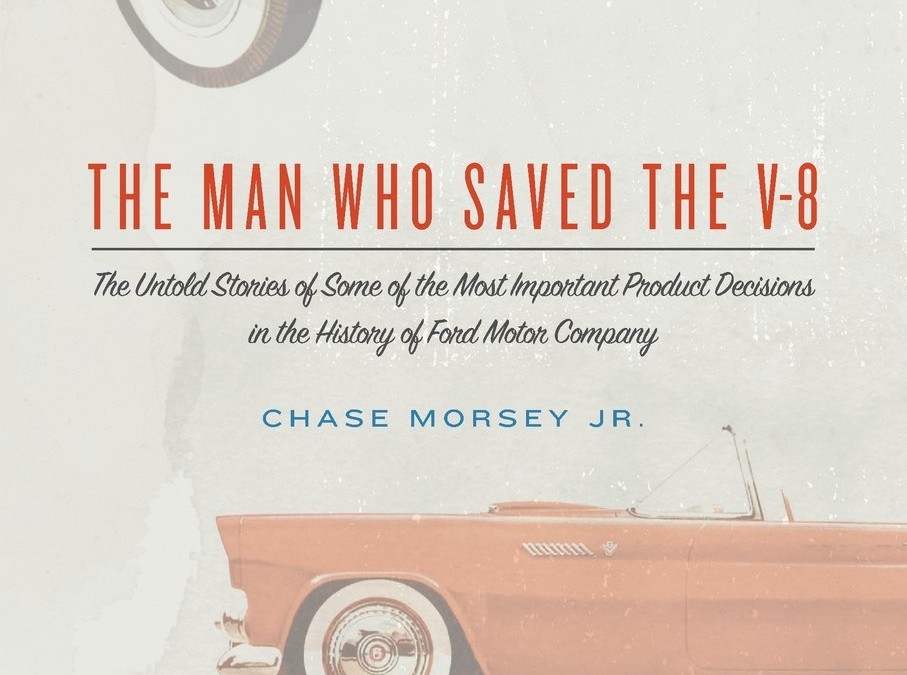
When Chase Morsey Jr. joins Ford Motor Co. in 1948, he has no idea the part he’ll play in automotive history.
Morsey’s arrival comes as Henry Ford II and other titans in the industry are about to kill the vaunted V-8 engine. He sees it as his sole mission to talk them out of it. In The Man Who Saved the V-8, he shares the never-before-told story of how his crusade saved the engine that would go on to power iconic cars like the Ford Thunderbird and Mustang.
“To this day, I have no idea how a young, newly hired manager like myself…had the nerve to challenge the most powerful men inside Ford Motor Company and tell them they were wrong,” Morsey says. “But that is exactly what I did.”
The twenty-nine-year-old executive embarks on massive market research. He works with manufacturing experts to find ways to produce the V-8 engine more efficiently. After finding success, he goes on to continue playing a central role in some of the most pivotal decisions that would ensure Ford remains one of the powerhouses in the automotive industry. The Man Who Saved the V-8 tells the story of his successes and lessons learned.
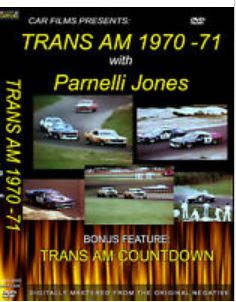
Trans Am 1970
The Trans Am series of 1970 was one of the most hotly contested race series in history as all drivers battled to take the championship in there mustang camaro, javelin or barracuda. this season took place at tracks like laguna seca, lime Rock, mid ohio, bridge hampton, donnybrook, and ending at kent washington excelent coverage as the chevrolet team as there pit burst into flames. drivers commentary the lonely world of auto racing WHO WON IN 1970?
BONUS FEATURE Trans Am Countdown this film has not been seen since 1970 a promo film made for the AMC javelin team focusing on a young Mark Donohue and Rodger Penske lots of unseen track footage! on track you will see an unusual combination of cars running together in practice like marks javelin being passed by a porsche 917 and the javelin passing some really exotic cars like ferrari’s Trans Am Countdown was tranferd directly from the 16mm original negative. it looks like it was shot yesterday (look at the frames i pulled off the film) all my films are high quality digital! (not pulled from a VHS copy)
The Trans Am series of 1971
Mark Donohugh and Rodger Penski battle for the championship. This film, 15min., shows the season of racing in 1971, Javalins against the Boss Mustangs excellent quality. You are there as history is being made
Parnelli Jones
This very informal evening with Parnelli was shot at a car club meeting in SO. CAL.
This very rare film documents a very relaxed Parnelli sharing his life with a room full of car guys, many intimate details of the Trans Am days.
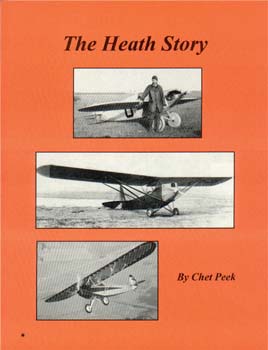
Chronicles the life of Edward Baird Heath and his famous “parasol” kitplanes. It spans the years from his first Bleriot flight in 1910 to the fatal test of his experimental Low Wing in 1931. He is best remembered for his introduction and promotion of the kitplane concept, powered by a Henderson 4-cylinder motorcycle engine. From 1927 to 1931, 1000s of air-minded young Americans bought his kits, then spent endless hours handcrafting a plane in barns and basements. Heath had an equally successful air racing career. His diminutive Baby Bullet bested all competition in the 1928-29 national meets. His mechanic and flight schools introduced a generation of young men to the world of aviation. He truthfully boasted that he never lost a student. The book contains over 150 rare photos and illustrations, telling the complete and fascinating story of this famous aviator’s life. He can truly be called “The Father of the American Kitplane Industry.” Today’s sport aviation community owes much to this heroic and far-sighed pioneer.

“Today’s NASCAR is a family sport with 75 million loyal fans, growing bigger and more mainstream by the day. Part Disney, part Vegas, part Barnum& Bailey, NASCAR is also a multi-billion dollar business and a cultural phenomenon that transcends geography, class, and gender. But dark secrets lurk in NASCAR’s past.
Driving with the Devil uncovers for the first time the true story behind NASCAR’s distant, moonshine-fueled origins and paints a rich portrait of the colorful men who created it. Long before the sport of stock-car racing even existed, young men in the rural, Depression-wracked South had figured out that cars and speed were tickets to a better life. With few options beyond the farm or factory, the best chance of escape was running moonshine. Bootlegging offered speed, adventure and wads of cash – if they survived. Driving with the Devil is the story of bootleggers whose empires grew during Prohibition and continued to thrive well after Repeal, and of drivers who thundered down dusty back roads with a car full of corn liquor, deftly out-running federal revenuers. The vehicle of choice was the Ford V-8, the hottest car of the 1930s, and ace mechanics tinkered with them until they could fly across mountain roads at 100 miles an hour.
After fighting in World War II, moonshiners transferred their skills to the rough, red-dirt race tracks of Dixie, and a national sport was born. In this dynamic era (1930s and 40s), three men with a passion for Ford V-8s – convicted felon Raymond Parks, foul-mouthed mechanic Red Vogt, and crippled war vet Red Byron, NASCAR’s first champion – emerged as the first stock car “”team.”” Theirs is the violent, poignant story of how moonshine and fast cars merged to create a new sport for the South to call its own.
Driving with the Devil is a fascinating look at the well-hidden historical connection between whiskey running and stock-car racing. NASCAR histories will tell you who led every lap of every race since the first official race was held in 1948. Driving with the Devil goes deeper to bring you the excitement, passions, crime, and death-defying feats of the wild, early days that NASCAR has carefully hidden from public view. In the tradition of Laura Hillenbrand’s Seabiscuit, this tale not only reveals a by-gone era of a beloved sport, but also the character of the country at a moment in time.”






















